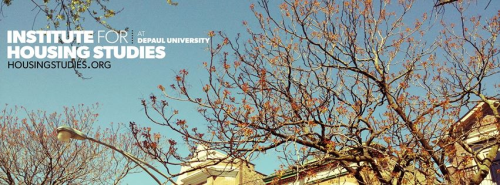Jun 13, 2013
Cost declining for multifamily buildings in Chicago
Cost declining for multifamily buildings in Chicago
CHICAGO – Prices for large multifamily buildings, defined as having five or more units, in Cook County, has declined by more than 11 percent in the past year. This is a stark reversal from recent trends that saw the sales prices for large multifamily properties increase each quarter from the end of 2010 to mid-2012, according to the first quarter Cook County House Price Index, released by DePaul University’s Institute for Housing Studies.
“After the housing crisis, rising rental demand in Cook County and a limited pipeline of new apartment buildings entering the market, led to rapidly rising sales prices for existing large rental buildings,” said Geoff Smith, executive director of the Institute for Housing Studies. “As construction of these type of properties picked back up, the increased supply is likely the cause behind recent price declines.”
From the fourth quarter of 2010 to the second quarter of 2012, prices for large multifamily rental properties increased by over 37 percent, but since this high point, prices for larger multifamily rental buildings have declined by 16 percent, and have declined by over 11 percent when compared to the first quarter of 2012.
The Institute’s first quarter 2013 House Price Index tracks quarterly price changes for the four main types of residential properties in Cook County: single family homes, condominiums, small multifamily buildings of two to four units and larger multifamily buildings with five or more units.
Other key findings from the index show:
• Cook County’s condominium market, the weakest segment of the county’s housing supply, showed signs of stabilizing after almost two years of consistent price declines. While condo prices are down almost five percent from a year ago, they increased by roughly one percent since 2012’s last quarter.
• Prices for single family homes in Cook County remained fairly flat in the first quarter of 2013. Compared to the first quarter of 2013, prices for single family homes increased by 3.5, but when compared to their price peak price in 2006, single family homes prices were down nearly 38 percent.
• Small rental buildings of two-to-four units showed the strongest price gains of the four property types tracked by the index. In the first quarter of 2013, prices for small rental buildings increased by over eight percent from a year ago. Despite four consecutive quarters of increases, prices for these properties in Cook County are still more than 56 percent below the peak price reached in 2006.
Visit housingstudies.org for the most recent summary of quarterly IHS Cook County House Price Index data. Archived quarterly summaries are also available online.
About the Institute for Housing Studies
The Institute for Housing Studies is a research center based at DePaul University that provides analysis and data to inform affordable housing policy and practice. More about IHS and its research can be found at housingstudies.org.
###
SOURCE:
Geoff Smith
gsmith33@depaul.edu
312-362-5962

Prices for large multifamily buildings in Cook County has declined by more than 11 percent in the last year according to new research from DePaul University's Institute for Housing Studies
